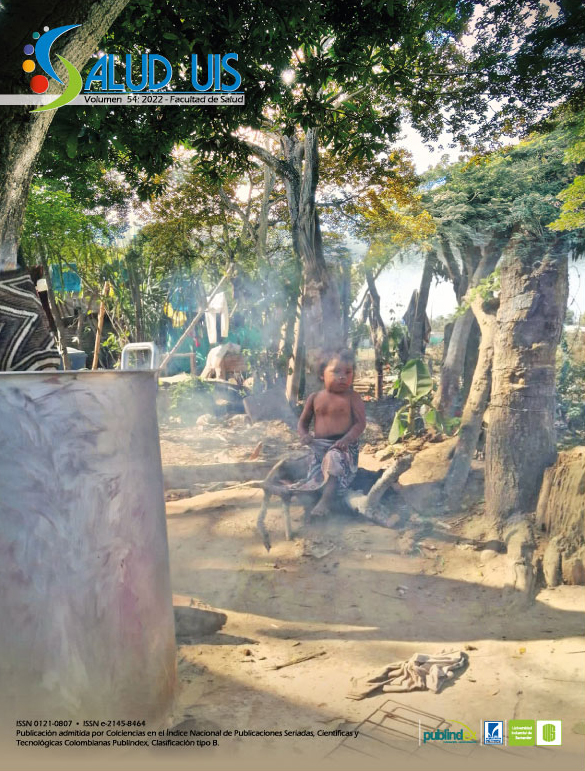Abstract
Introduction: The effect of the COVID- 19 pandemic on the development of children is still uncertain; therefore, it is essential to estimate their development status in the time before the pandemic. The sustainable development goals
favor all the resources and strategies to stimulate early childhood development. Government effectiveness is the
central axis of developing such actions, policies, and procedures. Methods: We used the early child development module and index from national health surveys (MICS) of 33 countries to calculate the children on track. We also use the World Bank Governance Index, specifically the effective governance score. In addition, we carry out analysis with ArcGIS and GeoDa software to evaluate geographic correlations between the variables studied and identify geographic patterns of child development levels and effective governance. Pearson and Spearman correlation tests were performed in Stata 15.1 software. Results: We studied children from 33 low and middle-income countries; from 7 world regions. Thailand (91.1%) and Turkmenistan (90.7%) have the highest percentages of child development and the lowest in Burundi (39.6%). The lowest value on GE estimate is in Burundi (-1.3), and the highest in the Democratic Republic of Korea (1.0). In the GE Rank, the highest values are again in Korea (82.1%), and the lowest in Haiti (0.9%). The correlation grade between ECDI and GE Estimate was moderate positive (0.522, P-0.001, Correlation Spearman test), similarly to (0.518, P-0001, Pearson correlation test). The general spatial pattern prevails that the African regions present low government effectiveness and early child development scores, positively correlated in this study. Conclusions: With the most up-to-date data reported by countries, it is possible to establish the level of child development before 2019, the year in which the COVID-2019 pandemic began. Studies must be carried out during and after the pandemic to develop the direct and indirect damage received by children in the dimensions of development, in which the government response is decisive.
References
Thompson RA, Nelson CA. Developmental science and the media: Early brain development. Am Psychol. 2001;56(1):5–15. doi: https://doi.org/10.1037/0003-066X.56.1.5
UNICEF. Inequities in Early Childhood Development: What the data say. Evidence from the Multiple Indicator Cluster Surveys. New York, NY: UNICEF; 2012. 16 p. Available from https://olc.worldbank.org/sites/default/files/Inequities_in_ Early_Childhood_Development_What_the_data_say_UNICEF_2012.pdf
Koster A, Bosma H, Broese van Groenou MI, Kempen GI, Penninx BW, van Eijk JT, et al. Explanations of socioeconomic differences in changes in physical function in older adults: results from the Longitudinal Aging Study Amsterdam. BMC Public Health. 2006/10/07. 2006;6:244. doi: https://doi.org/10.1186/1471-2458-6-244
Kickbusch I, Gleicher D. Governance for Health in The 21st century. Who. 2012;1–106. Available from: https://apps.who.int/iris/bitstream/handle/10665/326429/9789289002745-eng.pdf
Kirigia JM, Kirigia DG. The essence of governance in health development. Int Arch Med. 2011; 4(1): 1–13. doi: 10.1186/1755-7682-4-11
Lu C, Black MM, Richter LM. Risk of poor development in young children in low-income and middle-income countries : an estimation and analysis at the global , regional , and country level. Lancet Glob Heal [Internet]. 2010; 4(12): e916–22. doi: http://dx.doi.org/10.1016/S2214-109X(16)30266-2
Grantham-McGregor S, Cheung YB, Cueto S, Glewwe P, Richter L, Strupp B. Developmental potential in the first 5 years for children in developing countries. Lancet. 2007 Jan;369(9555):60–70. doi: https://doi.org/10.1016/S0140-6736(07)60032-4
Gil JDC, Ewerling F, Ferreira LZ, Barros AJD. Early childhood suspected developmental delay in 63 low-and middle-income countries: Large withinand between-country inequalities documented using national health surveys. J Glob Health. 2020;10(1). doi: 10.7189/jogh.10.010427
Mccoy DC, Peet ED, Ezzati M, Danaei G, Black M, Sudfeld CR, et al. Early childhood developmental status in low- and middle-income Countries: National , Regional , and Global Prevalence Estimates Using Predictive Modeling. 2016;1–18. doi: https://doi.org/10.1371/journal.pmed.1002034
Raikes A, Yoshikawa H, Britto PR, Iruka I. Children, Youth and Developmental Science in the 2015- 2030 Global Sustainable Development Goals. Soc Policy Rep. 2017 Jun;30(3):1–23. doi: https://doi.org/10.1002/j.2379-3988.2017.tb00088.x
Engle PL, Fernald LCH, Alderman H, Behrman J, Gara CO, Yousafzai A, et al. Child Development 2 Strategies for reducing inequalities and improving developmental outcomes for young children in low-income and middle-income countries. Lancet. 2011; 378(9799): 1339–1353. doi: http://dx.doi.org/10.1016/S0140-6736(11)60889-1
Engle PL, Black MM, Behrman JR, Mello MC De, Gertler PJ, Kapiriri L, et al. Child development in developing countries 3 Strategies to avoid the loss of developmental potential in more than 200 million children in the developing world. 2007; 229–242. doi: 10.1016/S0140-6736(07)60112-3
Jeong J, McCoy DC, Fink G. Pathways between paternal and maternal education, caregivers’ support for learning, and early child development in 44 lowand middle-income countries. Early Child Res Q. 2017;41:136–48. doi: 10.1016/j.ecresq.2017.07.001
Tran TD, Luchters S, Fisher J. Early childhood development: impact of national human development, family poverty, parenting practices and access to early childhood education. Child Care Heal Dev. 2016/08/19. 2017; 43(3): 415–426. doi: 10.1111/cch.12395
Loizillon A, Petrowski N, Britto P, Cappa C. Development of the Early Childhood Development Index in MICS surveys. New York: UNICEF; 2017. Available from: https://mics.unicef.org/news_ entries/110/IMPROVING-DATA-ON-EARLYCHILDHOOD- DEVELOPMENT
Kaufmann D, Kraay A, Mastruzzi M. The worldwide governance indicators: Methodology and analytical issues. Hague J Rule Law. 2011;3(2):220–46. doi: https://doi.org/10.1017/S1876404511200046
Chen Y, Legendre P, Dale MRT, Fortin M josée, Gurevitch J. A new methodology of spatial crosscorrelation analysis. PLoS One. 2015;10(5):1–20. doi: https://doi.org/10.1371/journal.pone.0126158
Semrud-clikeman M, Romero RAA, Prado EL, Shapiro EG, Bangirana P, John CC, et al. Selecting measures for the neurodevelopmental assessment of children in low- and middle-income countries. Child Neuropsychol. 2016; 1–42. doi: 10.1080/09297049.2016.1216536
Black MM, Hurley KM. Early child development programmes: further evidence for action. Lancet Glob Heal. 2016;4(8):e505–6. doi: https://doi.org/10.1016/S2214-109X(16)30149-8

This work is licensed under a Creative Commons Attribution 4.0 International License.
Copyright (c) 2022 Diana Milena Cortés, Jesús David Cortés Gil
